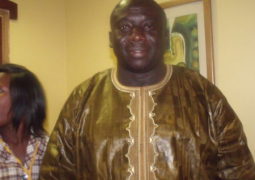Hello and a warm welcome to another edition of Environment, your weekly column aimed at bringing environmental issues into the limelight.
In today’s edition we examine the conservation issues affecting the Tanbi Wetland Complex.
The Point has learned that there is a significant need for mangrove and tree planting along the coastal shoreline and in the protected areas in the
We met with Kawsu Jammeh, manager of the Program of Work on Protected Area project (PoWPA) which is run under the auspices of the Department of Parks and Wildlife Management (DPWM). He gave us an insight into the TWC and the conservation challenges it faces.
Tanbi Wetland Complex
The TWC is one of The Gambia’s biggest national parks and is located in the country’s most densely populated area, with the local communities comprising about 40% of the total population of the country.
The principle objectives of the park are to safeguard the biggest spawning areas on The Gambia’s coastal ecosystem, and also to serve as a climate resilient initiative to protect the country’s capital which is at risk from rising sea levels.
There is significant pressure on resources as a result of mangrove cutting, encroachment for settlement, dumping of waste and erosion. Some parts of this wetland complex are designated as national park and therefore protected by law. In these areas, activities which could damage conservation efforts are illegal.
However, Mr Jammeh says that unfortunately the law is not always respected. Fishermen sometimes enter the complex illegally at night to fish for manatees. Due to inadequate funding, it is very difficult for rangers to police the waters properly.
Improper mangrove cutting is also a significant problem. Mr Jammeh says that all shellfish and finfish in the Sahelian upwelling marine eco-region depend on mangroves for feeding, nursery and spawning. Fish stocks in the region are therefore highly dependent on the mangrove ecosystem. He says that the protection of mangroves plays a significant role in food security as many people depend on fish and seafood rather than meat because of affordability.
Community engagement
When the TWC was designated as a protected area in 2001, effort was made to engage local communities in conservation efforts. Mr Jammeh says that this continues and that the Department of Parks and Wildlife Management continues to manage the area in collaboration with the government and the local communities in a regime it calls ‘co-management’. In support of this, there is a park management committee which comprises all the communities within the complex.
Mr Jammeh sees the management of the wetlands as having three agendas: to conserve resources, improve livelihoods and reduce the poverty level of the buffer communities, and to deal with problems affecting resources and the people living there.
One initiative involved giving some of the oyster collectors’ money to establish alternative livelihoods. Mr Jammeh says that this had the effect of relieving the pressure on the mangrove resources which were suffering as a result of the use of inappropriate cutting methods to harvest oysters which had also depleted oyster stocks.
The DPWM has previously taken oyster collectors to
Dumping and waste management
Illegal dumping and waste management issues continue to plague the TWC, a problem that pre-dates its protected status. The problem is not just limited to the complex, as there are numerous illegal dumping sites across the KMC area. Mr Jammeh says that in order to address this issue, a dump site must be allocated which will help regulate waste management around the KMC.
He says that since the councils are unable to manage dumping and waste problems, the Gambian government needs to establish a department charged with proper waste management. This need becomes even more pressing as the country’s population grows.
More hazardous chemicals are coming into the country which means that illegal dumping is more likely to contaminate biodiversity. This has already happened in places like
Mangrove conservation
According to Mr Jammeh, mangroves are essential to the local eco-system because they help stabilise the salt content of the water, thereby helping to avoid hyper-salinity. The vegetation on the uplands is integral to the process of rain water infiltration to replenish the underground water table. This enables fresh water springs to pump water into the marine eco-region.
Various organizations are therefore involved in mangrove re-forestation, including the DPWM, the West African Birds Study Association, World Wildlife Fund and Kanfora.
Mr Jammeh would be in favor of declaring all mangroves as protected areas to be managed by GAMPAN and the DPWM, Forestry Department, National Environment Agency, Water Resources and other land institutions. This is because the country depends on its fish stocks for survival. He is of the view that the whole country should cooperate and work together to ensure that the biodiversity of The Gambia is protected. He says that this can only happen if attitudes change and everybody sees these resources are theirs and takes ownership of their future survival.
To this end, the Association of Wood Re-exporters and Forest Users in The Gambia have recently embarked on a tree planting exercises in some part of the country. It has planted trees from the entrance of the airport to the main terminal building, also at the University campus of Faraba bantang and at the capital city of
Emphasizing that, the association would not and would never compromise the protection and the conservation of the forest and its environment.
For your comments, suggestions and contributions please contact (220) 6361340/7142236 or Email: asallah6@yahoo.com


